Sevan Kabakian: 'At Birthright Armenia, we give flight to people'
August 19, 2019
If you’re a diasporan Armenian between the ages of 21-32 and seek a unique and thrilling experience in the homeland, then look no further than Birthright Armenia! For the past 15+ years, this volunteer internship enhancement program has provided over 1,000 diasporan youth from across the globe with countless professional and personal enrichment opportunities, connections with other engaged souls, and an abundance of unforgettable memories.
Visiting Armenia for the very first time can be an emotional rollercoaster for some diasporans, who hope to feel a "homecoming" of sorts, yet expectations often clash with reality. The stakes are even higher for those who commit to living in the nation, especially if they don’t have any connections on the ground or speak the local language. So, who are these daring adventurers? Many of them are volunteers of an organization called Birthright Armenia. Since 2003, the program has provided a free, immersive experience for young diasporans to work, explore, and thrive in Armenia for anywhere from nine weeks to a year.
Last summer, my h-pem colleague and fellow diasporan, Loucig Guloyan-Srabian, and I ventured to the Birthright headquarters in Yerevan to speak with Sevan Kabakian, an aerospace engineer-turned-Country Director of Birthright Armenia. Since neither of us had participated in the program ourselves, we were excited at the opportunity for a crash course in discovering Armenia through their methods. As one of the lead engineers (to excuse the pun) behind this rollercoaster-of-an-institution, Kabakian gave us a sneak peek into the inner workings of such a formidable operation that has helped over a thousand young diasporans take flight, elevating themselves and our homeland, to uncharted heights. Read our conversation, and get ready to pack your bags!
'Just throw yourself into the country and see where it takes you...'
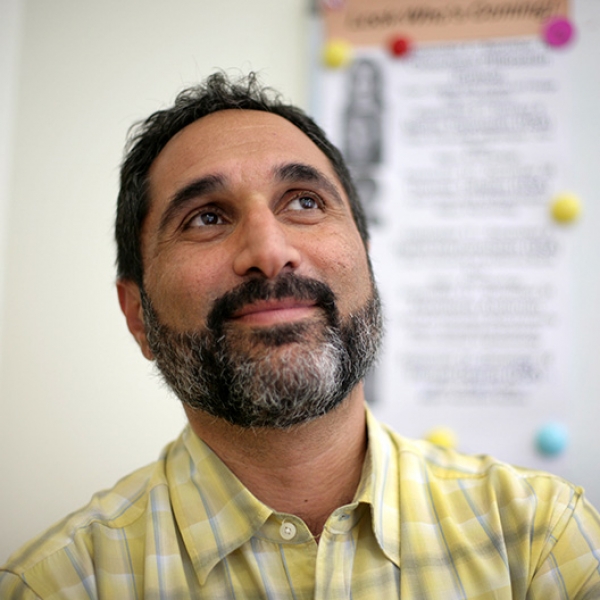 Birthright Armenia Country Director Sevan Kabakian. (Photo: Birthright Armenia)
Birthright Armenia Country Director Sevan Kabakian. (Photo: Birthright Armenia)Loucig Guloyan-Srabian: An undertaking of this size and caliber must incorporate meticulous planning. Describe your process.
Sevan Kabakian: What you see as a visitor to our office or our website is the surface of the program. Even if you’re a participant and go through the experience yourself, you’re riding a rollercoaster. There are different emotions as you ride different parts of the rollercoaster. You go, “oh that was nice,” and you get off and leave. But before you get on, there is a lot of engineering, maintenance, and technical stuff that happens that the rider is not even aware of. Someone who looks at the website of the amusement park doesn’t know that. They look at the nice pictures, the fun places on the rollercoaster. So, this is very similar. There’s a lot of planning, which means that you leave less to chance and more to the actual planning and expected output.
Of course, the experience itself, we don’t plan—like conversations between a family member and a volunteer, or a volunteer going hitchhiking and the conversations they will have with the truck driver. Those are all left to chance. But as far as all of the specific program elements and components, there is a lot of detail-oriented planning, assessment, and reevaluation. There’s a feedback loop, from which we constantly readjust the program. The program that exists today is very different from the one that was here 15 years ago—not in terms of its major components, but in how the operation is run—the behind-the-curtain part. It’s very, very different. We focus on a lot of aspects, like staff training and our long-term vision, so that it’s not cut-and-paste every year. These are important considerations for us.
L.G.S.: In your mission statement, you say that you want to “prepare future leaders.” To what extent does Birthright Armenia produce future leaders of the diaspora?
S.K.: A hundred post-volunteers live here in Armenia right now. Those who come for long-term stays and professional and personal life options are setting a trend that living in Armenia is possible. In that sense, it’s leadership without defining that one has to be a repatriate to be a leader. Just recently, one of our alumni was appointed Deputy Minister of Diaspora. This is public service leadership within the Armenian sector. We’ve had some alumni who have come back and applied and have been hired into government integration programs.
We have a regeneration of interest for alumni to volunteer their summers in Armenia. Two-thirds of our participants come to this program because they heard about it from previous participants. It’s not our Facebook page or our staff visits, but word of mouth. They are our spokespeople and ambassadors, who get others out of their routine to say, there’s something more to do with Armenia and with yourself, to be adventurous and to take this challenge. In France, for example, a few of our alumni are doing a presentation about volunteering in Armenia. We have volunteers outside who are entrepreneurial, creating their own start-ups and companies that connect to Armenia or Armenian resources. We have volunteers who have taken leadership roles in global organizations, young professionals, youth organizations or in their churches, and so on.
And even if they’re in a completely non-Armenian environment, they are much more confident and self-assured as a result of this program because this is not a 10-day tourism thing. It takes a certain type of individual to commit to several months of work. And taking that individual’s raw being, and then enhancing that through this experience, makes them much more capable or courageous diving into their next endeavor.
L.G.S.: What has experience taught you?
S.K.: To always stay fresh and relevant—not just with the new members coming in, but with staff members who have been here for many years. We are never satisfied with saying, “we’ve hit the pinnacle. This is it!” We recognize that there is always something we can improve on, which keeps us going in the right direction. Otherwise, you just go backwards. The program today is different than it was 15 years ago. That’s due to feedback and real experiences and surveys.
L.G.S.: Can you give a few examples?
S.K.: In the early days, we were a very English-centric program. English was the language of staff communication, in legal documentation. It was the language of communication with the volunteers. English was our website; our e-mails. Now, our website is fully translated into four languages. Our communication with the volunteers is in four languages and our application is in four languages. We always want to stay on the leading edge of where the country is. If the country grows, we want to be aware of that growth, so that we can improve our options of where volunteers can spend time and learn and contribute. Now, Gyumri is a yearlong program; before, it was a summer program. In five years, we’ll be in places that we’re not in now. We always want to be fresh, adaptive, and relevant. Today’s 22-year-old is different than a 22-year-old back in 2004. And in ten years, a 22-year-old will be different than what it is today.
L.G.S.: What are the biggest challenges in this process?
S.K.: The fact that we always want to be flexible reduces the stress and challenges because we seek to stay in tune and in touch. Of course, in any environment of change, there is the concept of the ‘comfort zone’ and familiarity and change is always a little stressful, so when you have to adapt and change from what you’ve done before, there’s an inherent stress in that. I wouldn’t call it a negative challenge, though. It’s a positive challenge to plan and face and overcome the obstacles. We want to always stay relevant to what is outside of the Armenian reality.
Initially, 90 percent of our volunteers were from the U.S.; now they are about half that. We recognize that not all of the Armenians outside of Armenia live in the U.S.. So, we have a goal to increase the numbers from different places, especially in countries where the Armenian population is large. The biggest one is Russia. Our first volunteer from Russia came in 2009. The second one came in 2011. Now, we have 20 to 25 volunteers from Russia per year. But even with that, we are not satisfied, because as the largest Armenian existence outside of Armenia, we should have more Russian-based Armenians than US-based Armenian volunteers here—demographically speaking.
If you aren’t there, how do you penetrate the market? How do you get the first people to come and participate so they can go back and tell others? How do you find new channels to participate? We’re working on this very diligently now. France is an important second target. Hundreds of thousands of French Armenians, but their participation numbers are not really representative yet of what we can do. Every country has its own local and regional colors and flavors, and we have to understand that. So, educating ourselves about the whole reality is something that’s always a challenge.
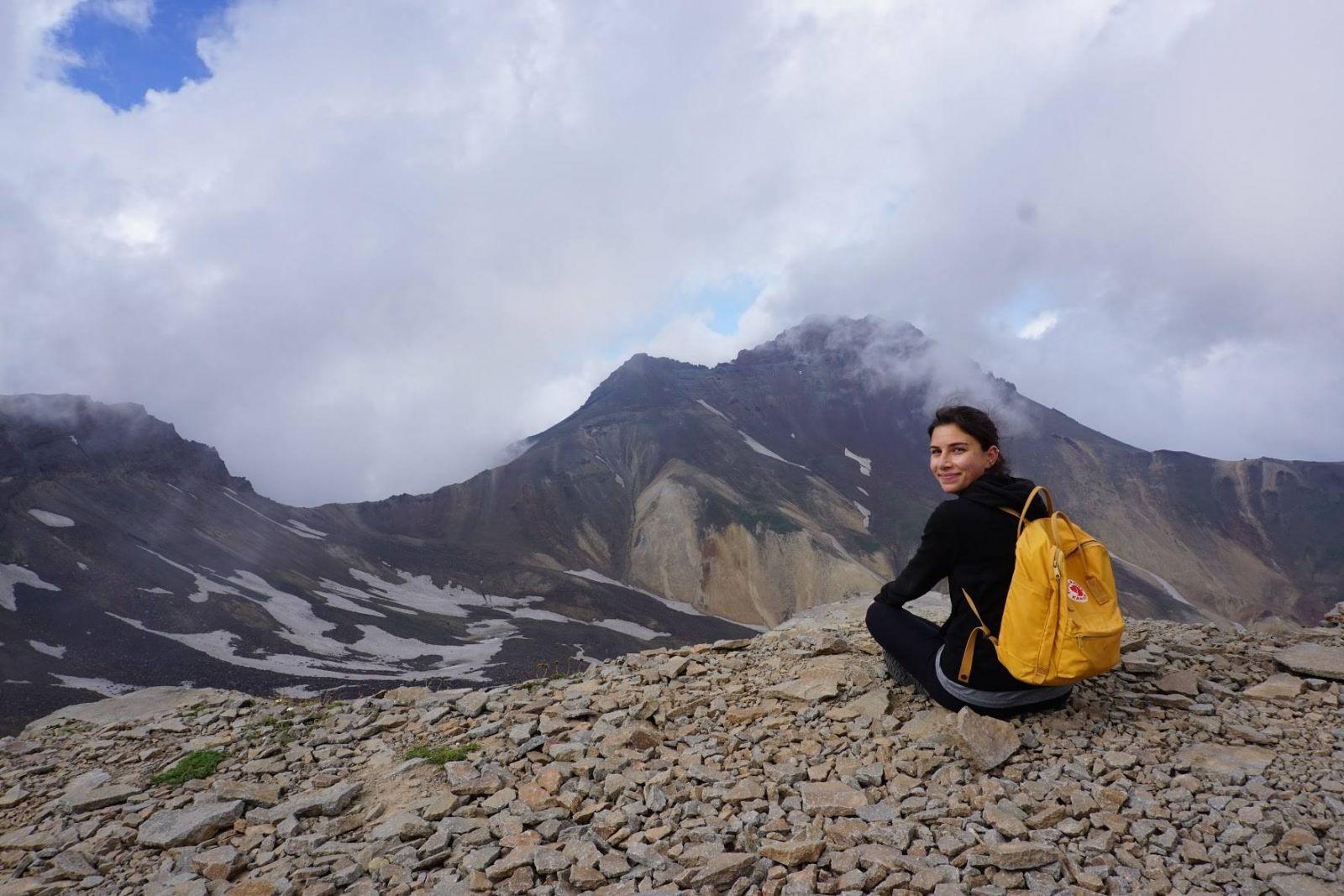 Click on this photo to check out "Among the Stones, a Blossom,” a blog post by recent Birthright Armenia volunteer, Noor Varjabedian, from Virginia (Photo: Birthright Armenia, 2019)
Click on this photo to check out "Among the Stones, a Blossom,” a blog post by recent Birthright Armenia volunteer, Noor Varjabedian, from Virginia (Photo: Birthright Armenia, 2019)
Lilly Torosyan: What sort of identity issues (or solutions) exist between different nationalities—for example, between Americans and Russians?
S.K.: There is no homogeneity within any country or any city. Even in Beirut, you would think that most of the Armenians speak Armenian, attended Armenian school, are a part of Armenian organizations etc.—that’s the typical historical definition of the Armenian demographic from Beirut. But we’ve had volunteers from Beirut who were half Armenian, spoke no Armenian at home, and came here to learn Eastern Armenian. We’ve had volunteers come here who did not go to Armenian school, so at home, they spoke Armenian, but they did not know how to read or write in the language. We have also had Armenians who were very immersed in the Armenian community in Bourj Hammoud, and once they went to college and saw the diversity of Lebanon, they said, “Oh my God, I missed out on so much; I was stuck in that little hole. I’m going to leave my Armenianness and embrace this multicultural diversity.” Then, at some point, they come here.
So, every person who comes through our program is here to get something different. There’s at least this one connection to something here that everyone shares. But as far as identity, within every city, it is completely different. We’ve had one volunteer who said, “Before coming here, I had no Armenian friends. Zero. I knew very few Armenians.” She lives right next to Glendale. I was surprised, but not anymore because there is so much diversity that our narrow definitions of Beirut Armenian or Los Angeles Armenian or Boston Armenian—they just don’t fit anymore.
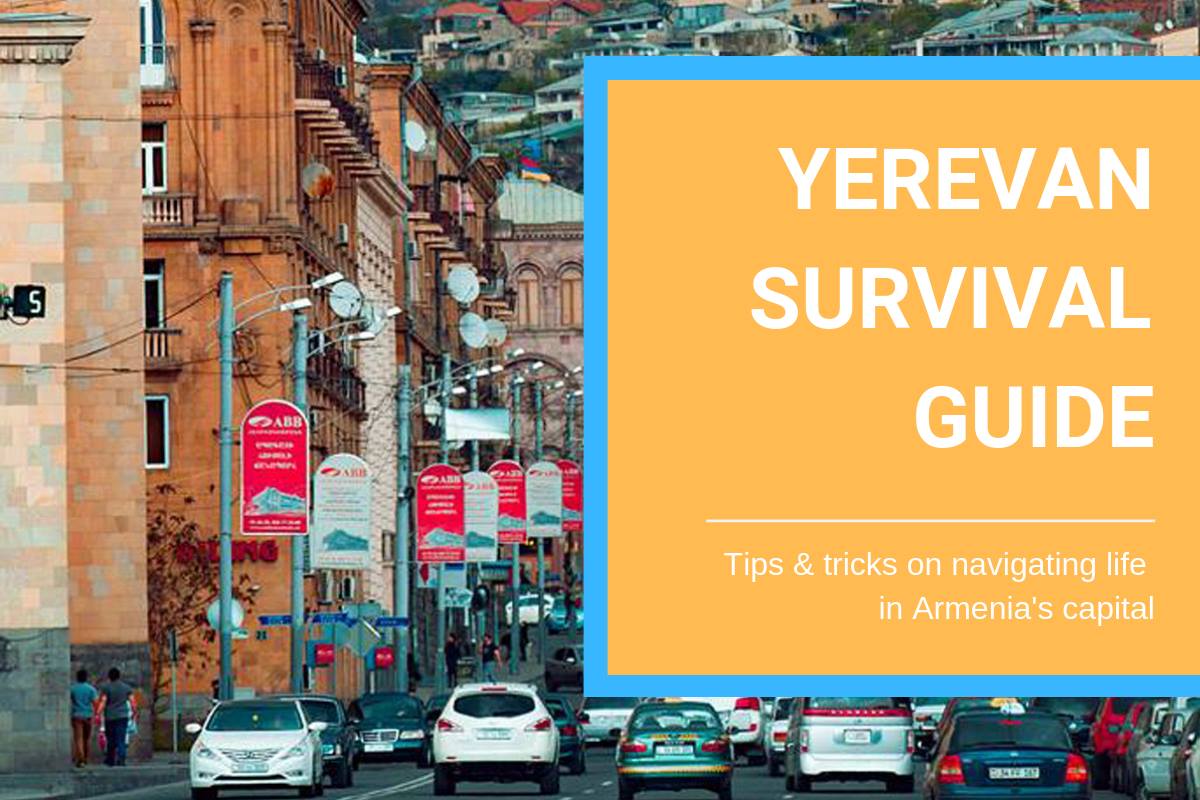 Yerevan Survival Guide: is a blog post by a Birthright volunteer, on tips and tricks for living and traveling in Armenia’s capital, 2019. Click on the graphic to read the guide!
Yerevan Survival Guide: is a blog post by a Birthright volunteer, on tips and tricks for living and traveling in Armenia’s capital, 2019. Click on the graphic to read the guide!
L.G.S.: When all these young people come to Armenia, what identity problems do they encounter (or solve)? Is it a two-way process? Is there something that Armenians living in Armenia think should be reconsidered in defining Armenian identity, after meeting with the volunteers?
S.K.: They bring with them identity issues, challenges, and questions. Some people come knowing exactly who they are, as Armenians. They know the definition, and they come over here and it changes—in either direction. Someone who comes from no Armenian community thought that being Armenian was grandmother’s sarma. When they come over here, a whole new Armenian reality opens up for them.
And then there is someone who comes from Armenian everything—they know exactly what it means to be Armenian because they live it everyday. A volunteer from this tribe told me, “I thought I knew exactly what being Armenian was, but coming here, I realized that I had 10 percent of the answer. Now, I’ve completed my definition of what being Armenian means.” This is someone who comes from an established Armenian community with a lot of community ties. So, the completion identity itself doesn’t mean that you have zero and now you have 10—you could think you have 10, but you realize, “I didn’t have 10; I had five! Now, I have 10!” And they still don’t have 10; they have seven.
But me, I think if they would put me in a remote village to live for three months, the villagers, and their way of life and traditions, I would learn so much more about what the real Armenian definition is all about. So, no one has the final answer. That’s why we tell people to put aside their definitions, inhibitions, and prepackaged ideas. Just throw yourself into the country and see where it takes you.
- Sevan Kabakian
L.T.: Have you ever received the opposite reaction? Say, someone who’s coming from a very Armenian-centered world and instead of their eyes opening to another aspect of Armenianness, they close in and reject it? Is there anyone who leaves the program feeling more uncomfortable or unsure?
S.K.: It’s very heavily character-based. I’ve heard from volunteers, “In X country, I feel more Armenian than I feel X. Once I came here, I feel more X than I feel Armenian.” I wouldn’t say that they completely close off and reject everything, but they reaffirm that there are things that they have from the outside, which they’ve internalized, and they reconfirm that internal relation of those customs, norms, traditions—whatever it is. And there isn’t anything wrong with any of this because the more someone develops who they really are, the more comfortable they will be to act in an ideal way—as a French person, as an American, as an Armenian, as a hybrid, as a whatever. So, this experience crystallizes a lot of things. Even if it reconfirms something that you have from before, that’s a good thing. The more they’re open to not being judgmental and learning, the more complete the final product will be; the more judgmental you are, the more obstacles will stand in your way, and the less complete the development will be.
Sometimes, we have fears of letting go. Some volunteers are better at this; others are less inclined or less receptive. I think a very solid majority of volunteers are open enough to really make the most out of this experience. We’re not talking about the experience itself but the identification of Armenian habits and traditions, norms and customs, and what they know from the outside. I’m talking about re-equilibrating; the hope is to rebalance yourself. Otherwise, someone may be closed off about noble customs but could have a fantastic experience.
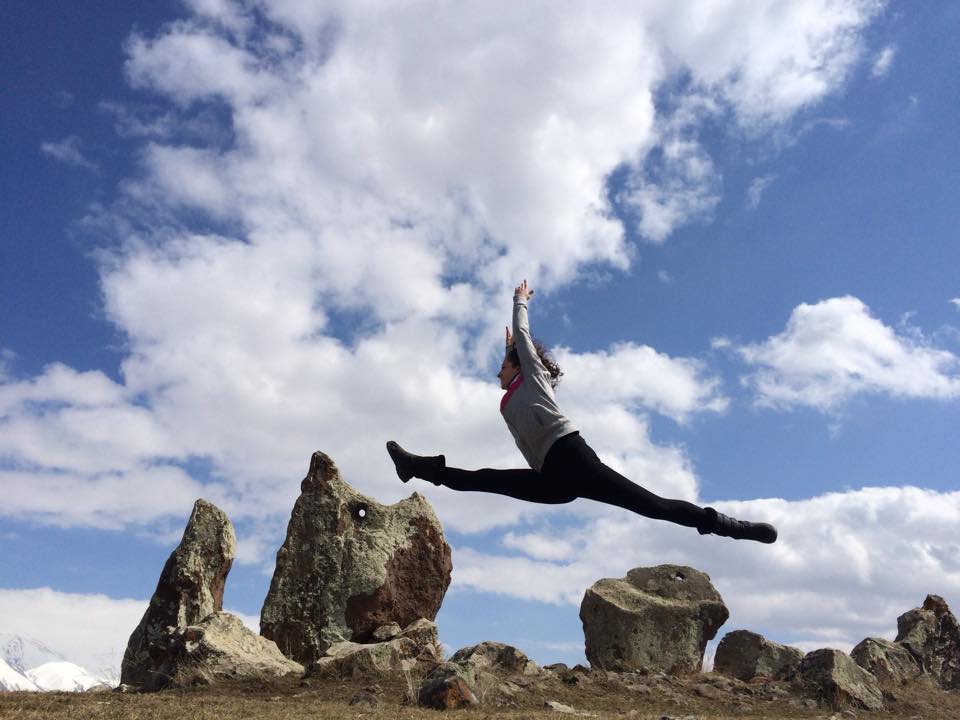 Volunteer Armina Khachatryan leaps across the monoliths at Carahunge. (Photo: Surench Photography, 2015)
Volunteer Armina Khachatryan leaps across the monoliths at Carahunge. (Photo: Surench Photography, 2015)
L.T.: We talked about the questioning of identity and Armenianness in Armenia, but most diasporans have a very visceral connection to the lost homeland, as opposed to the current Republic of Armenia. In 2015, you accompanied a group of Birthright Armenia alumni to Western Armenia. What kind of feedback or reaction did you receive from participants?
S.K.: My first time in Western Armenia was in 2005, and then Birthright Armenia organized this trip for the alumni in 2015. Western Armenia is a part of the historical Armenian reality, and having a connection and awareness of what’s there and what isn’t is important in the overall education package of any Armenian individual. We’re not focusing on the loss because seeing what’s in Western Armenia today is an important catalyst for what we want to happen on this side.
Appreciate what you have here today because it’s much more real and imminent and immediate and intimate. Once you go to Western Armenia and see what’s no longer there, you realize that nothing is permanent. At some point, that area thrived, but it no longer does in the Armenian context. Whatever thrives on this side could very easily not thrive in 200 years. So, it’s very important for people who go there not to feel sad, but to see the reality of power, of your geographical existence, of your surroundings. It is a very good feeling when you come back and pass through the checkpoints of Turkey-Georgia, then Georgia-Armenia. Once you’re back in Armenia, there’s a very comforting feeling of “I’m so happy this exists.”
Unfortunately, the part that you made about some Armenians being more connected to Western Armenia than this Armenia—”oh, we’re from Kharpert not Gyumri!”—I don’t blame people, but that comment is a lack of familiarization. The border that exists today didn’t exist 500 years ago, so what’s Gyumri? What’s Shushi? What’s Kharpert? If Aram Manoukian was born in Shushi and he went to defend Van, what does it mean that I am from Kharpert but not from Gyumri? After the Genocide, some Sasuntsis went to Deir Zor (Syria); other Sasuntsis came to Talin (Armenia).
Fortunately, the younger generation—because there’s less of a connection to the old towns—can physically connect with what we have today: the Republics of Armenia and Artsakh. Some of that generational yearning of “oh, our Kharpert” slowly dissipates. So, this generation’s 15 year old, 20-year-old, 25-year-old, sees a different reality in Armenia, which is important so that they feel comfortable in cities and villages where they don’t have personal familiar roots.
L.G.S.: To that point, volunteers come here and they hear Eastern Armenian. Is there a focused approach in trying to make Western Armenian relevant, as well, in the program?
S.K.: This issue has always been there. It’s, at once, a personal, cultural, and relevance issue. If someone hasn’t had the opportunity to learn any Armenian—Eastern, Western, Northern, Southern—because of their life reality, we want to teach them Armenian. The dialect of this country is Eastern Armenian, so we’re teaching the language that our volunteers will be able to use to converse with their host families, their taxi drivers, and so on.
If they’re inspired by the fact that they now speak Armenian and want to diversify and speak Western Armenian because that’s what their grandmother speaks, then great! We give them brochures with resources to continue learning Armenian online after they return home, so it’s not a “This is it! End of Armenian learning. Good luck in Oklahoma!” Some go back and their Armenian continues to improve; for others, their language skills decline—even with online courses—because it’s very difficult to maintain in an environment where the language is nonexistent. The reality of diasporan language and cultural loss is always there, even if you give a boost. We’re developing an Eastern Armenian language learning app, which would be open to the entire world, like Duolingo.
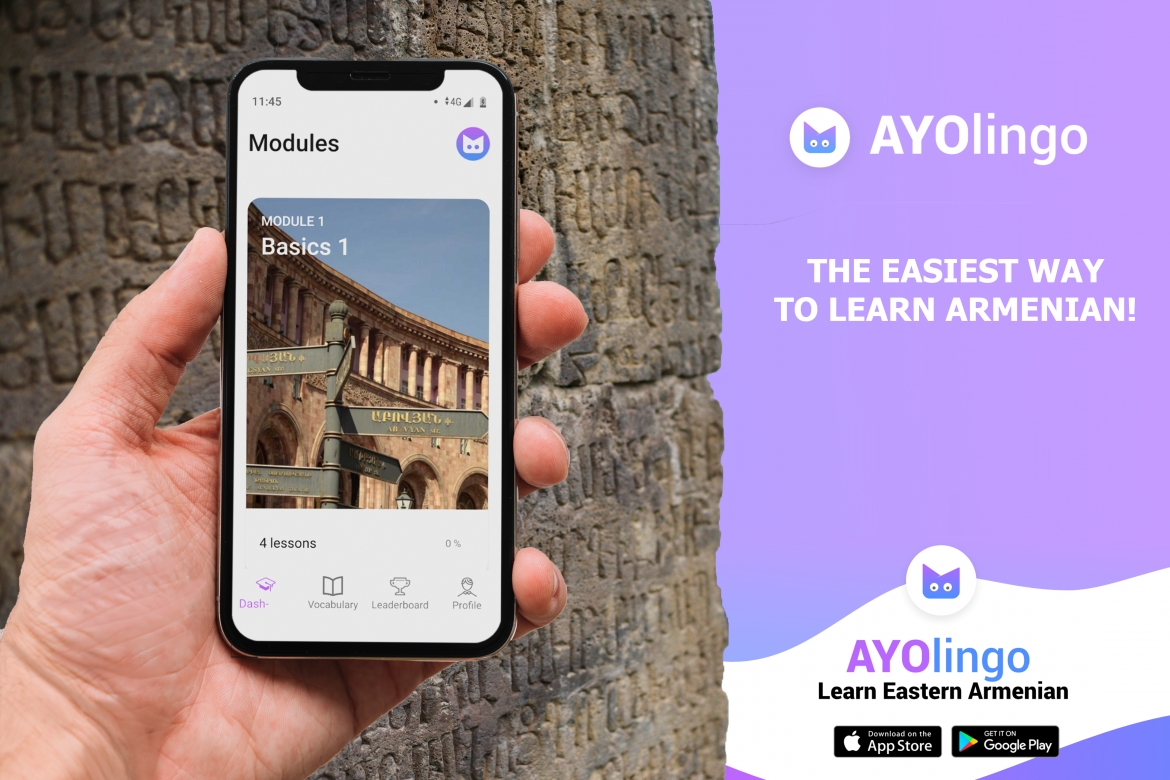 AYOlingo (a play on the popular language-learning app, Duolingo) is a newly-launched free-to-use mobile application to learn Eastern Armenian, developed by Birthright Armenia. (Graphic: Birthright Armenia, 2019)
AYOlingo (a play on the popular language-learning app, Duolingo) is a newly-launched free-to-use mobile application to learn Eastern Armenian, developed by Birthright Armenia. (Graphic: Birthright Armenia, 2019)
L.G.S.: In the years since Birthright Armenia was founded, different initiatives have sprouted in the country, such as ONEArmenia. Do you think such projects compete with Birthright Armenia or complete its work in having a better understanding of a homeland? How does Birthright Armenia stand out in this field?
S.K.: We don’t see anyone as our competitor. We see a lot of organizations as collaborators in the process of improving and helping this country move forward. So, whether it’s ONEArmenia or other organizations, these are all positive partners who, at the end of the day, serve a common mission. We all want to see Armenia succeed and become better, happier, and more prosperous. Everyone does it in a different way, using different means, so there’s no competition. Even those who are doing volunteer programs are not our competitors either.
When you go to an all-you-can-eat restaurant, is the salad competing with the soup? There’s a salad; there’s some soup. You can have both. It’s all there but you can’t have it all at the same time. They’re different phases; we do different things. You can do one program, then the other.
One of our biggest assets is that we never get into the turf protection mindset. “Our program is the best! Our program is the only one! We are unique.” We work very hard to have a good program, and if our participants are happy, then we’re happy. But we don’t want exclusivity. We’re part of a very large panorama of individuals and organizations working for a good common cause. We view ourselves as a piece of a puzzle. It’s not for us to make ourselves stand out. Our goal isn’t to be loved, but to provide a vehicle for an experience that can have a longer-term impact on the individual and also on the country. The question should be, “Are we serving Armenia?”
L.T.: You have said that mental repatriation is the foundation for physical repatriation, and the key to this is to visit, explore, and get rid of your stereotypes. Is it possible to mentally repatriate without physically repatriating, and, if so, what does this look like?
S.K.: Mental repatriation is an important concept and, as unlike physical repatriation, it has no boundaries or external limitations. You fully control it. There are a lot of externalities that come into play with physically moving to a different country. But mentally, it’s you and the flexibility that you have. If you adapt, Armenia is something that you can say, “I really own.” All of that process happens over here. It’s whatever limitations we put on ourselves that limit our capability to mentally repatriate. In the process of mental repatriation, there are different phases: one is identity formation; another is being able to adopt dual identities comfortably.
At Boeing, we gave flight to airplanes; at Birthright Armenia, we give flight to people. We take people from one place in their lives and put them in another place. People ask us, is your secret mission to have people repatriate? It’s very interesting; we don’t have a secret mission. Our mission is very simple: we want to give people opportunities.
They’ll decide for themselves; we don’t have to get involved. Our goal is to give them opportunities to look at their life, reality, and identity in a bigger section—not what they had previously defined. There’s a lot of value in physical repatriation. We believe that, and we don’t hide it. But our mission is to support them in the choices that they make. Physical repatriation isn’t necessary for mental repatriation. You can live in Armenia and be less connected to Armenian identity and culture because you’re just born with it, you’re not thinking about it.
And for someone on the outside, it could be a struggle because you want to keep your identity. “I want to teach my children Armenian; I want to go to an Armenian play.” So, it’s more of a struggle, and there is more consciousness of identity outside, for those who aren’t in that category. And, of course, there are also others on the outside who are now beyond that struggle because assimilation has completely taken over. So physical repatriation isn’t necessary for mental repatriation, but mental repatriation—for those who come in from the outside—is an important cornerstone for physical repatriation. Mentally, you have to adopt this reality as being a part of you.
L.G.S.: What opportunities exist for those who come and experience Armenia through Birthright Armenia when they go back to their communities?
S.K.: Phase one is the experience, which is very structured and time-limited. Phase two is the alumni post-volunteer experience, which has no expiration date. From the repatriation angle, we have a long-term employer-based program called Pathway to Armenia. We also provide grants of up to $20,000 for alumni who have projects here. Any volunteer who needs simple support for a future return trip or a recommendation for school/work, we help. We realize that the more our alumni connect, the more they amplify what they can do. That is why we’re creating an alumni-networking communication tool. We always say that if there’s anything beyond the official model of the alumni support, to let us know. We want to be of assistance. What we have today for support will be different from what it will be in five or ten years. We see that the real impact of Birthright Armenia isn’t the in-country experience. This is a launchpad for the rest of their lives.
For more information on Birthright Armenia, visit their website birthrightarmenia.org.
All photos are courtesy of Birthright Armenia, unless otherwise noted.
Join our community and receive regular updates!
Join now!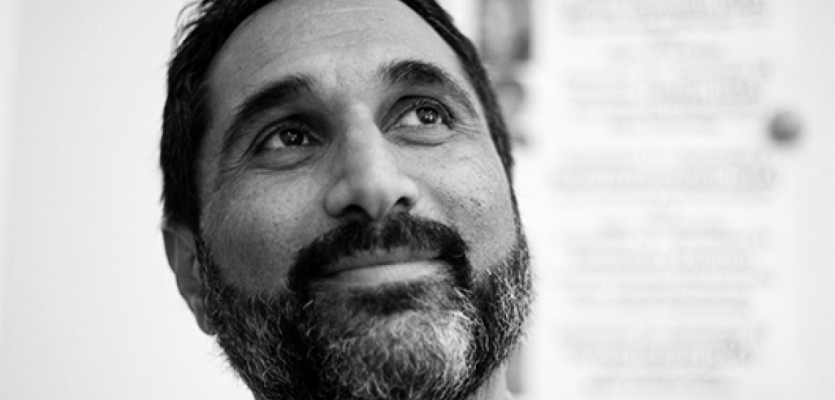
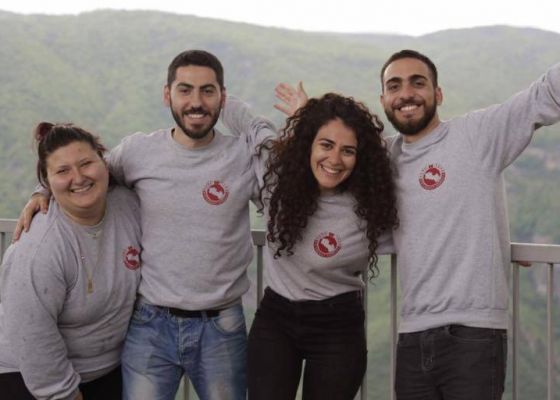
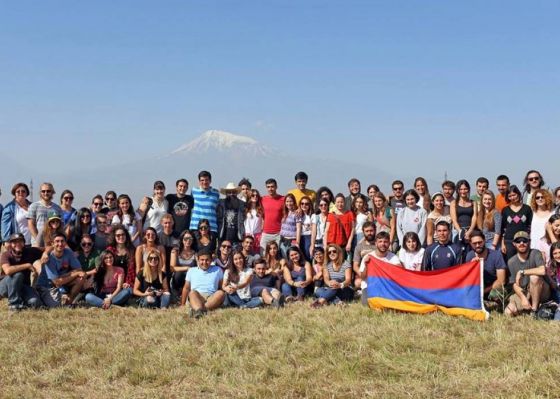
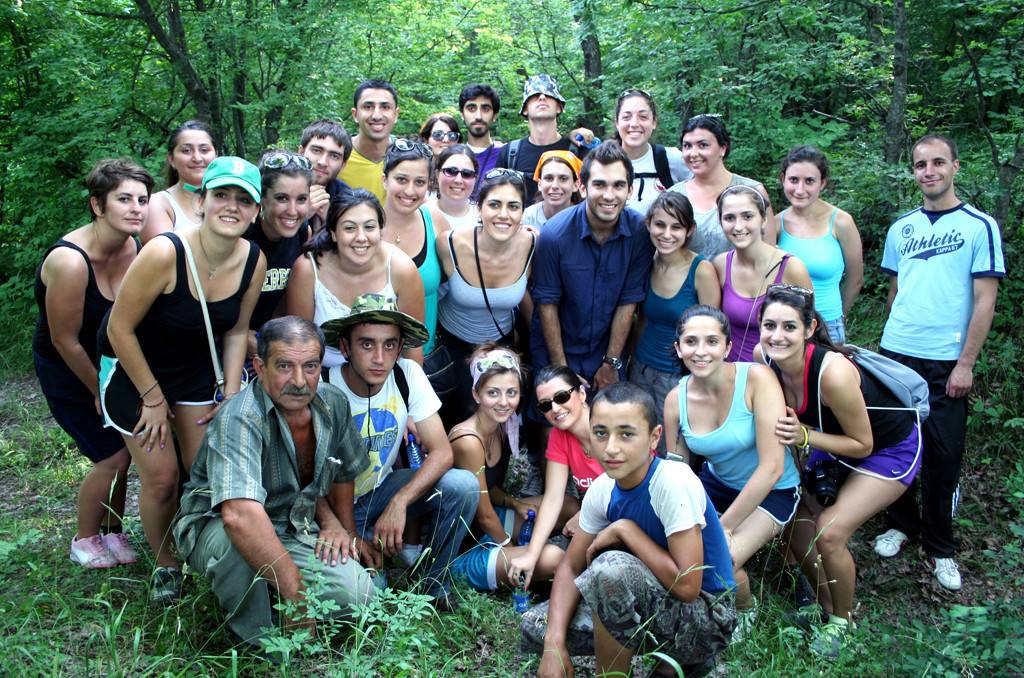
Attention!